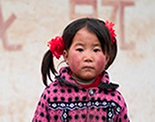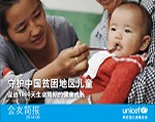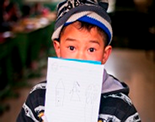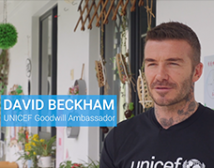NEW YORK/JOHANNESBURG, 01 December 2017 – In 2016, 120,000 children under the age of 14 died of AIDS related causes, and 18 children were infected with HIV every single hour. If current trends persist, there will be 3.5 million new adolescent HIV infections by 2030, according to projections from the 2017 UNICEF Statistical Update on Children and AIDS released today.
|

©UNICEF/UN059872/Zar Mon
The three excited 16-year-old friends, Kyaw Nay Soe, Zayar Win and Phyo Min Tun, comes to check out the HIV/AIDS awareness-raising and health tips display booth set up by the National AIDS Program (Mandalay Region) with the support of UNICEF and partners at the famous Taung Pyone Festival in 2016. |
“It is unacceptable that we continue to see so many children dying from AIDS and so little progress made to protect adolescents from new HIV infections,” said Dr. Chewe Luo, Chief of HIV for UNICEF. “The AIDS epidemic is not over; it remains a threat to the lives of children and young people and more can and should be done to prevent it.”
A UNICEF analysis of demographic trends and new HIV data reveals that targets set in the 2020 Super-Fast-Track framework developed in 2016 to end AIDS among children, will not be achieved.
There has been some progress in the fight against AIDS, notably in preventing mother to child transmission of HIV. Around 2 million new infections among children have been averted since 2000. However, UNICEF warns that such progress must not lead to complacency as the Statistical Update highlights that children age 4 and under living with HIV face the highest risk of AIDS-related deaths compared to other age groups.
Paediatric HIV testing and treatment is lagging, with only 43 per cent of HIV exposed infants being tested within the recommended first two months of life, and the same percentage of children living with HIV receiving lifesaving antiretroviral treatment.
|

©UNICEF/UN0147629/Schermbrucker
A baby is tested for HIV through the PCR test which involves blood being taken from the foot, and these results being sent off to the nearest lab. |
UNICEF says progress in preventing new HIV infections among adolescents and improving testing and treatment in adolescent populations has been unacceptably slow. In 2016 alone, 55,000 adolescents (age 10-19) died from AIDS-related causes, 91 per cent of them in sub-Saharan Africa. The data also reveals a worrying gender disparity: for every five adolescent boys living with HIV, there are seven girls of the same age.
“To continue at this slow rate of progress is to gamble with the lives of children and commit future generations to a preventable life of HIV and AIDS,” Dr Luo added. “We must act urgently in order to sustain any gains we have made in the past decade.”
|

©UNICEF/UN0147633/Schermbrucker
Jean Ngoy (32 months) at the paediatric ward at the local hospital in Katanga, Haute Katanga Province DRC. Jean is suffering from severe acute malnutrition and HIV. |
UNICEF proposes a way forward for addressing gaps in the HIV response. This includes:
-
Investing in, and utilising emerging innovations such as HIV self-testing, pre-exposure prophylaxis and new paediatric drugs;
-
Scaling-up the response for children including expanding treatment programmes and investment in new technology for point-of-care diagnostics;
-
Strengthening capacity of governments for the collection of comprehensive, disaggregated testing and treatment data, especially on adolescents, to help inform programming;
-
Prioritising interventions for adolescent girls in sub-Saharan Africa.
The AIDS epidemic must remain a global public health concern, according to UNICEF. Innovative solutions must be adopted to speed up progress in preventing HIV infection of children and ensuring those living with HIV get the treatment they need.
###
Notes to editors
Download multimedia content here
More information is available at: www.childrenandaids.org
About UNICEF
UNICEF works in some of the world's toughest places, to reach the world's most disadvantaged children. Across 190 countries and territories, we work for every child, everywhere, to build a better world for everyone. For more information about UNICEF and its work for children visit www.unicef.org.
For more information contact:
Gbolayemi Lufadeju, UNICEF New York, +1 917 213 4034, glufadeju@unicef.org
Patsy Nakell, UNICEF Johannesburg, +27 76 872 2147 / +27 79 495 5938, pnakell@unicef.org
Hai Mingwei, UNICEF China, +8610 85318422, mhai@unicef.org
































